1964 Corvette Stingray : Classic Car Spotlight

Back in 1963, the Chevrolet roared into the scene, marking the start of its second generation. The 1964 Corvette Stingray model, was powered by a remarkable 375-horsepower V8 engine that became the stuff of legends in the automotive world. Let’s take a closer look at this iconic vehicle and the powerful heart that made it a true classic.
The Chevrolet Corvette often dubbed ‘America’s Sports Car,’ has earned its place as the most successful sports car in automotive history. Its second generation, the Chevy Corvette Stingray, made its grand entrance in 1963, captivating car enthusiasts worldwide.
The 1964 Corvette Stingray, along with its high-performance counterpart, the Corvette was equipped with a legendary 375-horsepower V8 engine, a powerhouse that left a lasting mark. In fact, this small-block V8 stood as General Motors’ most potent offering until the turn of the millennium in 2001.
Surprisingly, it was the reborn 2001 Corvette Z06 that eventually surpassed the record set by the 1964 Corvette, showcasing the enduring legacy and continuous evolution of this iconic American sports car.
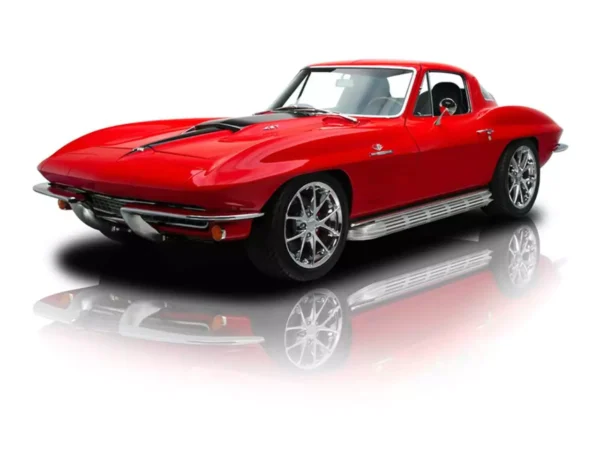
Contents
Cruising Through 1964 Corvette Stingray History
The original Corvette, a stylish convertible, graced American roads from 1953 to 1962. Originally, General Motors envisioned it as a challenger to European sports cars. However, as rival American automakers set their sights on the Corvette, this success story ignited the legendary ‘horsepower wars,’ paving the way for iconic Detroit muscle cars.
In 1963, Chevrolet introduced the second-generation Corvette, earning it the affectionate nickname ‘Corvette Stingray’ due to its distinctive, slanted front fenders. This two-seater came in a coupe body style, featuring agile independent rear suspension.
Notably, 1963 had a unique split rear window, making it a favorite among fans who consider it one of the best years for Corvettes. However, it was the 1964 Corvette that etched its name in history for entirely different reasons.
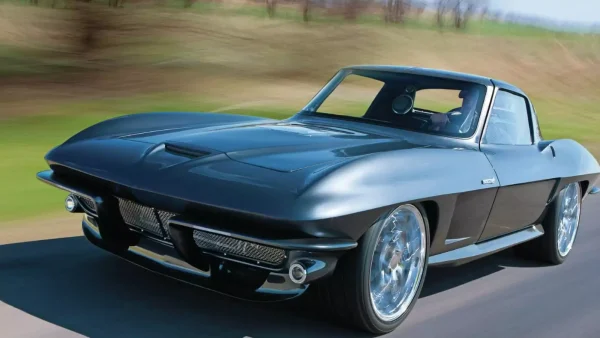
Evolution Of Power: The Small-Block V8 In The 1964 Corvette Stingray
When it comes to the Chevrolet Corvette’s engine history, it’s a story of continuous evolution. In the early days, the Corvette sported inline-six engines, but in 1955, a significant change occurred with the introduction of a 265 cubic-inch V8 engine. Fast forward to 1962, and engineers pushed the boundaries, enlarging the V8 to 327 cubic inches. This marked the beginning of the legendary 350 cubic-inch small-block V8, which would define Chevrolet’s performance legacy.
Before the 350, the 327 small-block V8 took center stage for several years. During its development, the engine transformed into a powerhouse, becoming one of Chevrolet’s most significant racing engines. In 1964, engineers gave the 327 a substantial boost by introducing a more aggressive camshaft. This upgrade increased the engine’s power to an impressive 365 horsepower, setting a benchmark with one horsepower for every cubic inch.
But the Corvette team didn’t stop there; they also offered a fuel-injected version of the 327, known as the L84. This high-performance V8 boasted an astonishing 375 horsepower at 6,200 RPM, making it a sought-after choice for Corvette enthusiasts. Moreover, those who craved racing-ready performance could opt for the Corvette Z06 package, turning their ’64 Corvette into a true road beast.
The legacy of the L84 from the 1964 Corvette and Corvette Z06 endured for nearly four decades, as it remained Chevrolet’s most potent stock small-block V8 engine. This evolution of power represents the heart and soul of the Corvette’s enduring legend.
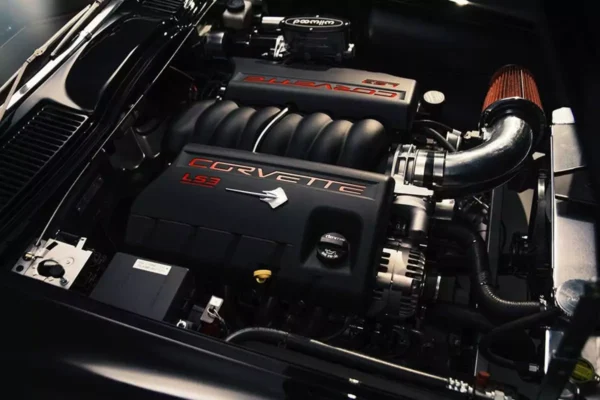
The Transition To Big-Block Power: A Corvette Evolution
In 1965, Chevrolet made a strategic shift by focusing on big-block V8 engines in lightweight vehicles. This decision led to the redesign of the second-generation Corvette, making room for General Motors’ powerful big-block engine family. As a result, the revered 327 V8, once a premier racing engine, had to step aside due to its limited displacement.
The transformation of the 327 was remarkable. With a lengthened stroke, it evolved into the enduring 350 cubic-inch small-block V8, a legendary powerplant that would go on to propel numerous GM vehicles. From trucks to vans and generations of Camaros, the 350 became an iconic engine.
Hot rod enthusiasts adored it for its ease of modification. However, despite its longevity, the stock 350 in five generations never matched the power output of the stock 327 in the 1964 Corvette Stingray. Breaking this record would require a fresh contender.
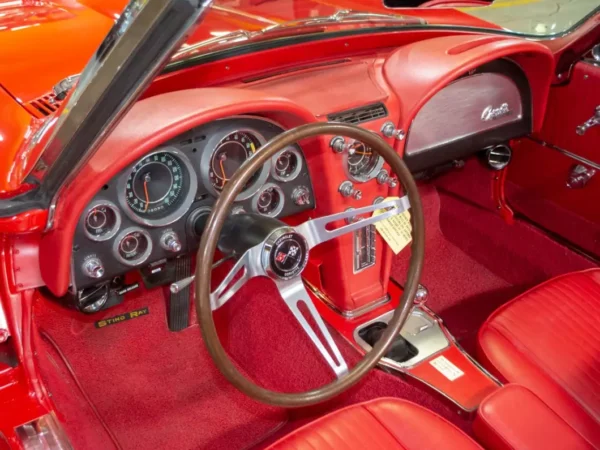
Fast forward to the early 2000s, and Detroit was in the midst of a resurgence of classic V8s and muscle cars. In 2001, Chevrolet resurrected the Corvette Z06, introducing the LS6 V8 for the new model. This fuel-injected 350 cubic-inch small-block V8 was rated at an impressive 380 horsepower, finally dethroning the 327. What’s more, the second-generation Corvette Z06 outshone its predecessor.
Today, the Chevrolet Corvette Stingray is experiencing a renaissance, with the 2023 Corvette Z06 being a standout model. Still, for those who hold a special place in their hearts for vintage Stingrays with lightweight, small-block engines, the record-breaking 1964 Corvette and Corvette Z06 will forever remain cherished icons of the past.

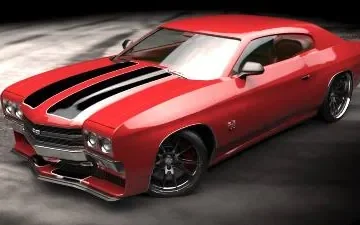

0 Comments